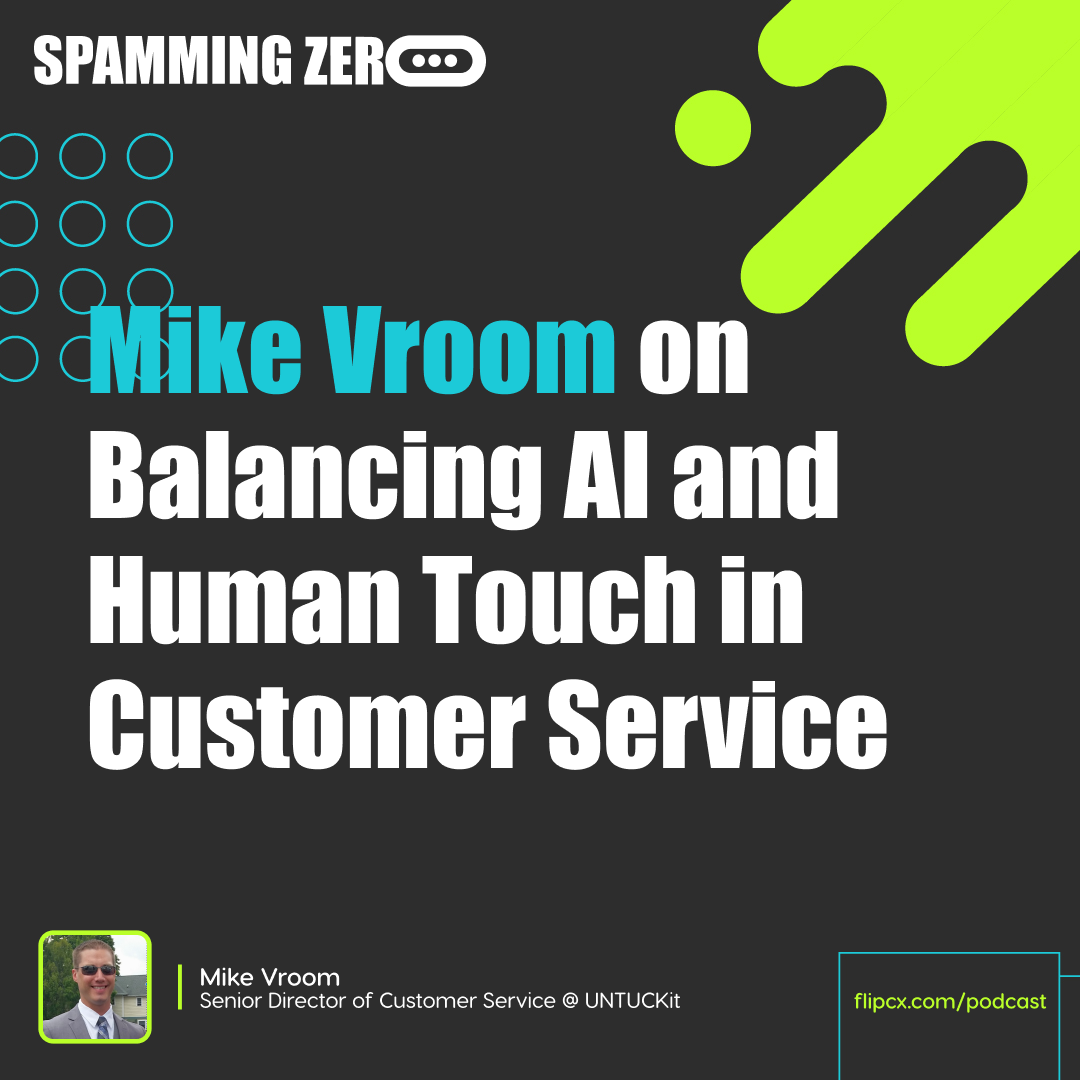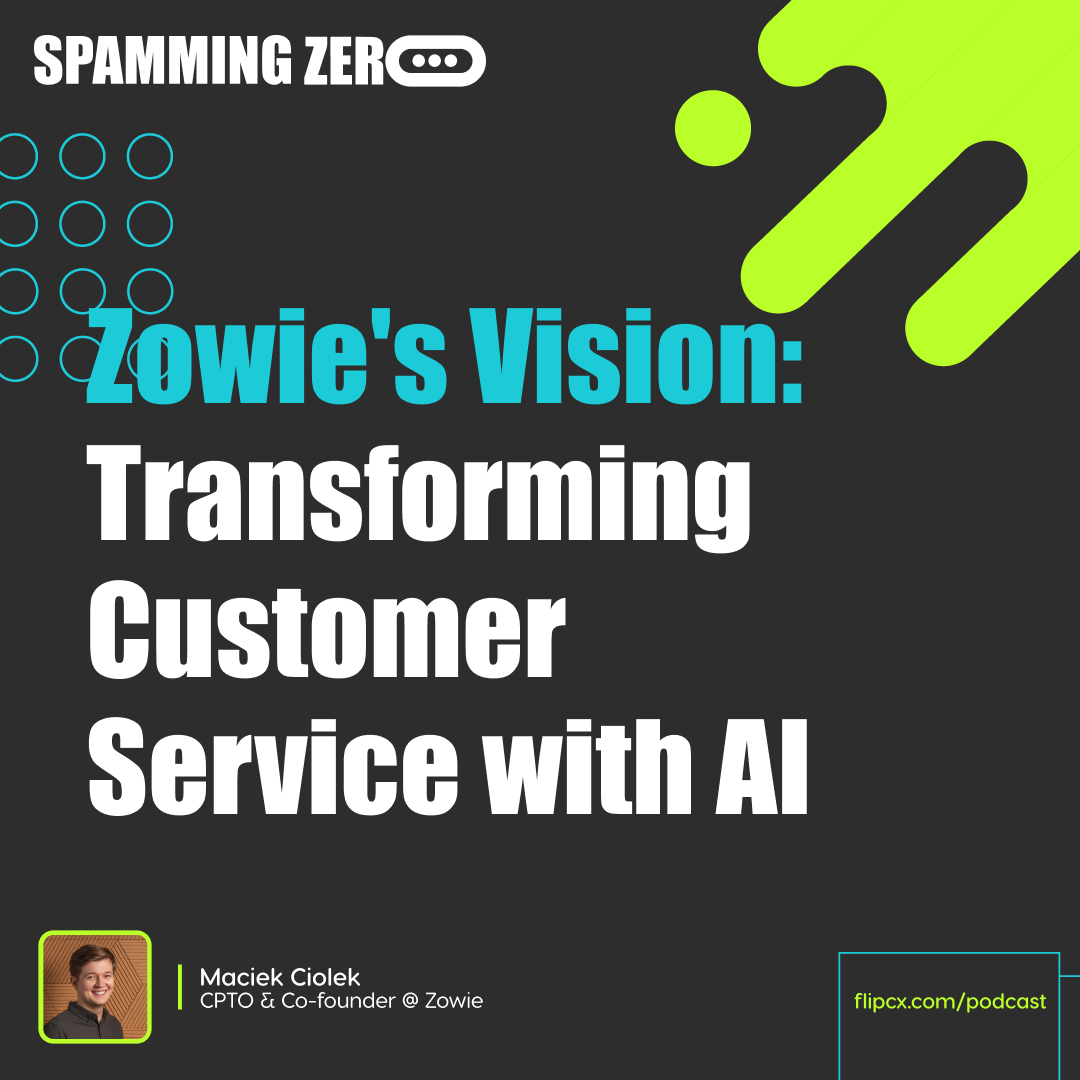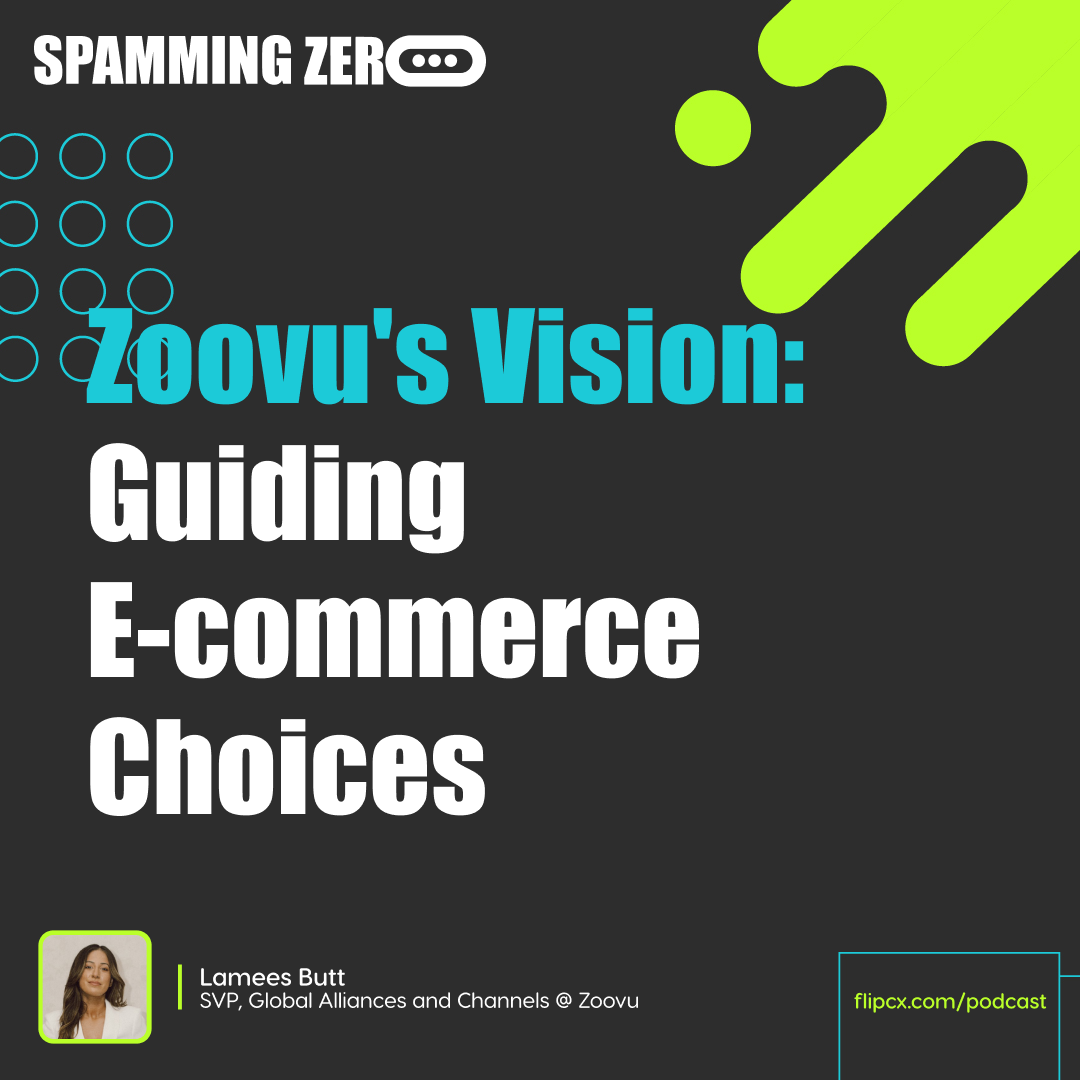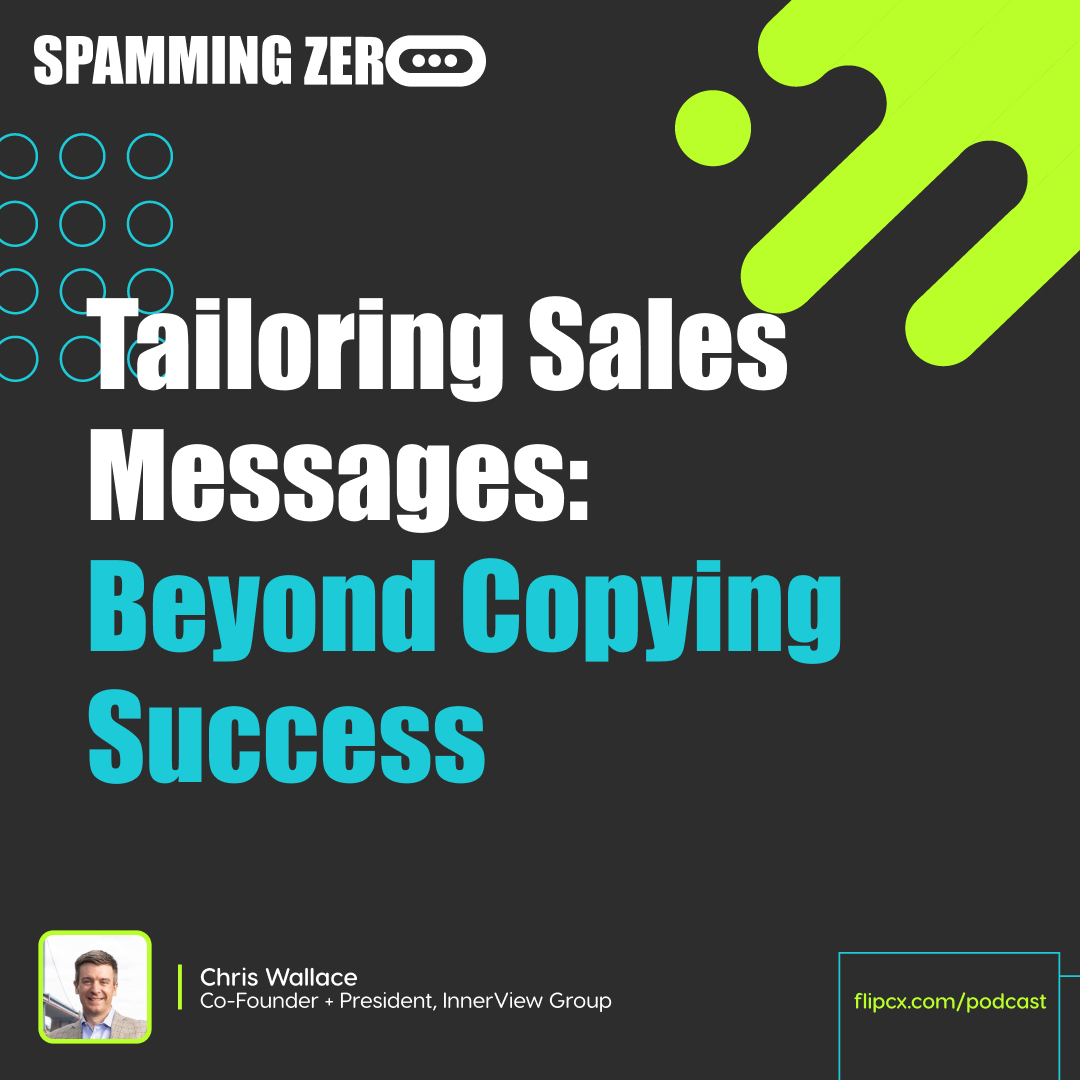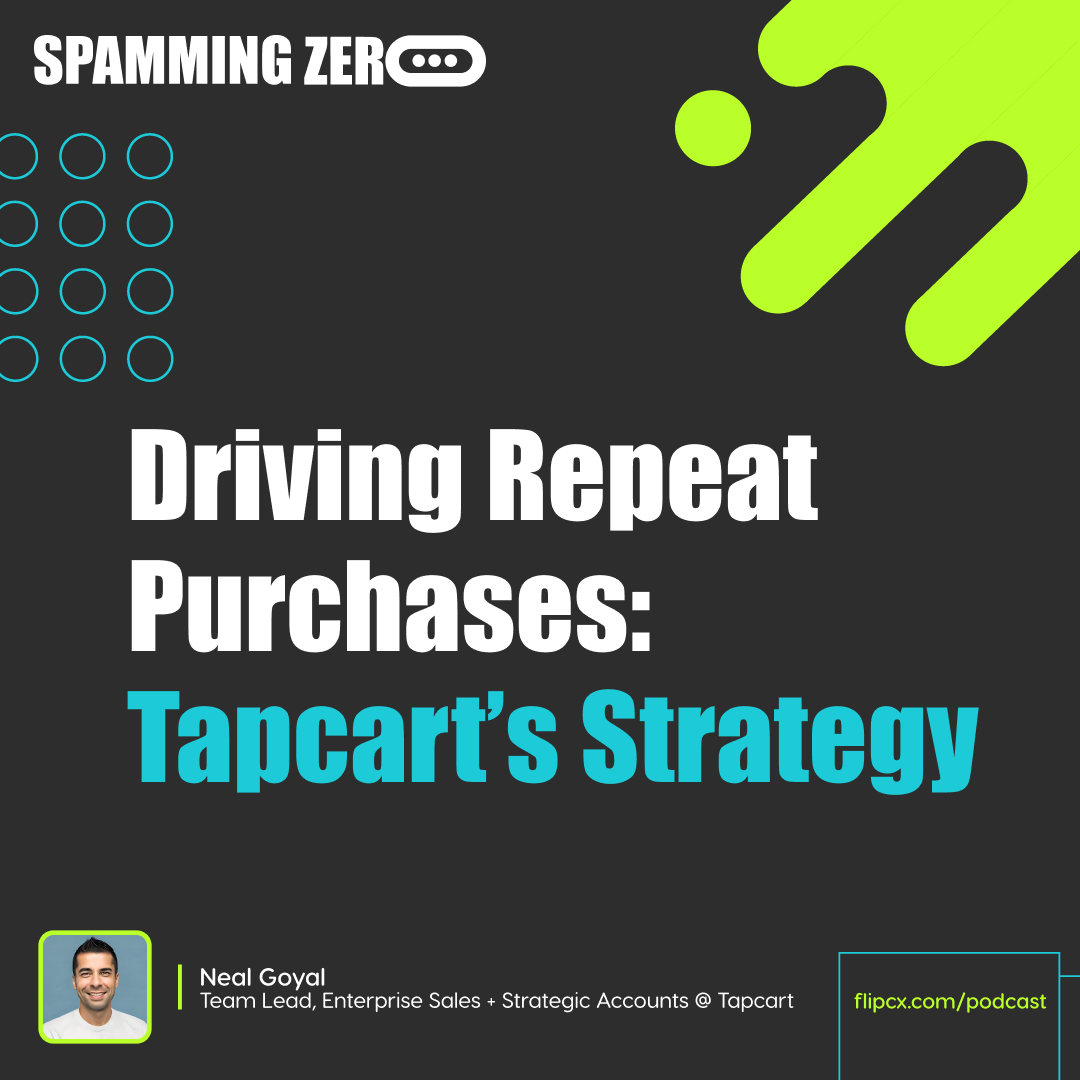Episode 20: Combining Sales and PLG for a Better Buyer's Experience
- 0.5
- 1
- 1.25
- 1.5
- 1.75
- 2
James Gilbert: Hello everyone, and welcome to another episode of Spamming Zero. I'm your host, James Gilbert. Today, we are joined by Duane Dufault. He is a revenue leader and the Head of Sales at 1Build. We asked him the question that we ask every guest on the show about what he thinks about calling customers for... Here's what he said. He hits zero instantly. The first thing he thinks about is customer service. If he has to call a phone and it's anyone other than a human after the first 30 seconds, he's already elevated. Man, can I relate to that? In his opinion, there are a couple of companies with semi- decent bots out there, for the most part, but there's no good way to get around your question unless you get to a human right away, which is great because it's a shameless prologue for RedRoute. But nonetheless, we are super excited to talk with him today about how sales and PLG can come together for a better experience. Duane thinks most companies just try to implement product- led growth without human intervention and assume that things are going to go well, they almost never do. But, just look at some of the most giant companies ever created and you'll see they have product- led growth and sales process perfected. More on that in the conversation ahead. A personal note on Duane. Duane has four daughters and his wife is a traveling nurse who works 3: 00 AM to noon every single day, so it's exciting times at his house. A fun fact, he can't understand why the heck we can't teleport yet. We might dive into that. Stay tuned for our chat with the one and only Duane Dufault. We'd like to thank our current sponsor of the month, Aircall. Aircall. io, go check them out. I love what they do. They also just reached 100 million in revenue, which is incredible. We partner with them, they're a big part of our ecosystem. Aircall is a Cloud based call center and phone system of choice for modern businesses, a voice platform that integrates seamlessly with popular productivity and help desk tools. Aircall was built to make phone support easy to manage and accessible, transparent, and collaborative. Aircall believes that a great conversation is the most powerful way to communicate with customers, prospects, candidates and colleagues. We tend to agree. They are as equally invested with voice and sound as we are. I'm James.
Speaker 3: And I'm Brian.
James Gilbert: This is Spanning Zero. The topic at hand today is about PLG. I want you to tell us why humans need to be involved in a PLG motion. First of all, should PLG even exist, Brian? That's the real question.
Speaker 3: Well, you got me on the horn here, not Sam. Co- founder Sam is avid, on the record anytime anybody asks... Deterrent of PLG, I guess you would say.
Duane Dufault: Right, so he doesn't like the buyer- led process for PLG and all that stuff?
Speaker 3: Well, his... To be totally fair.
James Gilbert: I think so more he just doesn't like the buzzwords. He doesn't like buzzwords.
Speaker 3: Yes, it's the buzzword element of it.
Duane Dufault: Yes, I don't like buzzwords either, but...
James Gilbert: Sam calls it self- serve, right?
Duane Dufault: Yes.
James Gilbert: But, it's the same concept.
Speaker 3: I think that what it represents and the actions that it drives are all very good things. One of the things that I talk about all the time is people are making buying decisions based on three criteria. One is the impact and the benefits they can receive. Two is the level of effort required to achieve that. Three is the perceived certainty with which it can be achieved. A lot of the fundamentals of PLG speak to that second one of how much effort goes into it and how much friction are you putting in the buying process?
Duane Dufault: Oh no, I like that criteria because I have very similar ones. The impact one I think is probably one of the more challenging ones to get people to understand because it comes from more of the messaging and positioning of the product itself. You can have a really easy- to- use tool, but then if it doesn't connect or solve a big problem for them, then it's like you forget about it and you complain when the invoice comes back around, you got to go and cancel it. But, with self- led or product- led or whatever, it's been around since the nineties, it's not a new thing. That's why when you open up your Microsoft laptop and there's an update or you need to renew your Office 365, it prompts you, you don't get a phone call. It's been around for the longest time and some of the biggest companies we've ever known. That's why you don't get a phone call from Apple, unless you're a 1000 person company who happened to breathe on their website, they want you to go and buy something from them, you're going to get a phone call from somebody. Whether it's self- led or product- led or buyer- led, it's all the same concept of people want to do their own research and they want to know if they can get to a certain point without human assistance. If they need human assistance for whatever reason, there's usually a frustration point there that needs to be solved in the product. With that being said, there are certain industries and markets where self- led or product- led is needed. If I'm going in and buying a tech tool, if I have to go through discovery call, I'm going to be pissed. I don't need to be guided through this demo. If I have to ask you as a salesperson a specific question, I'm frustrated at your marketing and your product teams because you couldn't describe it well enough on the website for me to get my answer. I don't need a 45 minute walkthrough of 19 things I don't care about, I want to know if it's going to do this one specific thing. Understand your buyer before you put a self- led process in place.
James Gilbert: Okay, we got to double down.
Duane Dufault: I could go on. I can go on.
James Gilbert: We're going to keep...
Speaker 3: We will be going on.
James Gilbert: Yes, we're going to keep going on. I got to double down on this whole idea of, all right, well... You're 100% right on the idea of you're frustrated with the fact that it wasn't messaged well enough for you to get your answer.
Duane Dufault: Yes.
James Gilbert: All right, riff time. Here we go. I am a Chief Marketing Officer for RedRoute, I'm not a writer though, I'll tell you that. Brian knows that, he knows why. I'm working at it. It's a skill that takes time and lots of effort and practice with. But, here's what I know...
Speaker 3: Overrated requirement for a CMO.
James Gilbert: Yes, totally.
Speaker 3: Overrated requirements.
James Gilbert: But, here's what I will say.
Speaker 3: If they got creativity in data, then they are checking all the boxes.
James Gilbert: But, here's what I will say. How about we stop writing crap on our websites that is just absolute garbage and only we internally understand it? Come on. Are we really still doing this? It's funny because you bring up an incredible small item in my mind that a business can tackle, and that's simplifying the language on a website so it's crystal clear. There's still... You go to websites today all over the place and they use filler words and technical jargon and it has one purpose, to try to drive SEO. Let me tell you something, a plug here for us, because I do think this is something that is very, very real, voice search is how we speak, it's not how we write. If it is now taking over Google search, what does that mean for our content and what does that mean for our websites? It absolutely means that it needs to be written in a way that you speak. There are writers, there are people that have been doing this for way longer than I have, way better experts than me when it comes to writing that still argue this. What do you say to them?
Duane Dufault: The only thing I would say is, one... Yes, I do not like reading things that it's hard for me to say out loud. I am not a writer and I'm not a very good talker. But, the way I write best is when I do talk into my phone, that's when I also talk the best too. I'm the most articulate when I have to tell Siri what to tell this other person. But with that being said, my only concern with that is are we fighting against the algorithm that the Googles, the Facebook's, and the search engines are promoting? Are we ignoring...? I don't have the answer to the question, but if we do put the verbose language on our landing pages that encourages organic and high valued SEO, then the algorithms inside of the search engines like that. But, if we're writing a copy in the way that we talk, that goes against that verbose language, are we hurting ourselves by not ranking against the algorithm? Is there a happy medium? That would be my question for you guys or anyone that does that stuff, because I'm on the sales end. I'm on the go- to- market side, which is we tend to craft strategy and then be on the recipients of those leads that come in. I'm always trying to figure out how we can optimize our stuff for the algorithm while not confusing our buyer, but I always feel like those are two competing interests.
James Gilbert: I don't know if they are though, because I mean, think about it. You're on the front lines of selling, so if you have to sell it, that means you have to have a crystal clear elevator pitch that everyone understands too. Ultimately, your SEO efforts mean absolutely jack garbage if you don't close business. Drive all the traffic you want, right? What the freak matters?
Duane Dufault: That's very true. Basically, what I think you're saying is what I agree with is it's a conversation and argument that I have with marketers all the time, is when they're focused on MQLs and sales is having to sit in the results of what their definition of MQLs are, they're actually driving leads and traffic that don't actually buy from you. They're getting captured from the algorithm from some of the cool words that are on the website, but in reality, they're not the buyers that we want to talk to.
James Gilbert: I do think there is still, and likely will be for a very long time, a fundamental problem with top of funnel leads that get generated, which ties back into the PLG motion that in some cases the people that would be accessing the product as a self- serve model might actually not be the right people to begin with.
Duane Dufault: I agree.
James Gilbert: That could potentially be the tie- in of why it maybe should be sales- led. But, I will also tell you, my perfect world is never talk to a salesperson.
Duane Dufault: There's plenty of environments where I feel the same way. I'm perfectly happy going... But, I definitely think there's a limit of the ACV. How much money are we asking people to buy with the level of trust that a self- led process is developing? I do feel that the sales- led or the human element does have a trust factor that it's hard to get from a certain type of buyer and a certain level of ACV. If you're in the multiple five figures, if you're asking someone to spend 50,$60,000 a year, there should probably be a person on there just to give them that certainty that we're talking about that the self- led brings. But, if it's$100,$ 300 a month, that's a high cost to put on one customer to send a salesperson to call multiple times a day, does a demo, does the CSM work, all that stuff. I think there's a line there where if the ACV is high enough, the value that a human is giving is more on the certainty and trust side, not so much reducing the effort and the impact. If you've got the messaging right, they understand the impact. If the product team does a good enough job, then the effort shouldn't be a monumental lift in order to get the product up. The only last thing to do is just that confirmation and certainty that could come from a human person, human person like an alien. But, hopefully that makes sense.
Speaker 3: I think that the last thing that you said there is where I was going to take it a little bit, the certainty and the trust. To me, having a conversation with a brand of any kind, B2B, B2C, whatever, it should be a luxury and not a requirement. I think that really what both you are driving at here is you get forced into the discovery call with a salesperson when you're trying to buy whatever tool, mostly in a B2B environment. It shouldn't be forced. That's the real issue. It should really be ideally a luxury that is available to you when you want the certainty, when you want the trust, when there are very specific personalized custom answers that you want to get. It should be a great addition to the experience.
Duane Dufault: For example, if I'm exploring a tool and it's hard for me to get to a human, that's a concern for me. I shouldn't have to fight to go through some weird Zendesk ticket response system to where I get an email two days later at two o'clock in the morning to know if my question's getting answered. That's not a great experience. That doesn't give me a high level of certainty and trust that if shit goes wrong in two months, I'm going to actually get it fixed. But at the same time, if you're not showing pricing on the website, the only CTAs are to book a call with a salesperson, and it's a long drawn out discovery call that leads into a demo, that leads into a closing call, that leads into implementation, I'm like, is this going to be the same way it is every time I need something from them? There's definitely... I like the way you put it. It's a luxury but not a requirement, because every buyer has their own process and every buyer likes to take themselves through their own buying behavior, for lack of a better term, and if we're only shoving them down one funnel that's extremely rigid, you're missing out on a large portion of the market.
Speaker 3: Nothing degrades trust like a vendor or a brand that is hiding from their customers.
Duane Dufault: Yes. Especially...
Speaker 3: If you're trying to avoid me then that is not the...
Duane Dufault: You're not trying to... The whole thing with SaaS, right? In the VC land, they're all about upsells, expansion, constantly selling them, CSMs no longer make sure the customer's happy, successful in using the product, focus on reducing churn. It's like," Oh cool, let's get them in, land and expand, get them in on an annual contract. Six months in, let's make sure they're using it. Oh, we're not going to take care of you, we're just going to sell you. Anytime you need help, you're going your passed over to your CSM or your account manager." It's like," I don't want to be sold. I want my team to get trained and get taken care of so that way I actually stick with you guys." Then, hiding renewals inside of long form... A microcopy inside of a weird email that gets sent out to your accounting team that's an unchecked email 60 days before the renewal. It's rampant, it's all over the place. It's like they're basically strong- arming customers into sticking into their product long term and having big legal ease when it comes to the renewals of like," Oh no, we charged you$22, 000 because you didn't send in this random email 60 days prior letting us know you were going to cancel." I'm like," The buying process for your tool is two weeks, why the hell would I do that 60 days before?" There's just these competing interests when it comes to not only the sales process and how we get people on, but it's how we're maintaining our healthy customer base on the backend.
James Gilbert: It's interesting, you brought up marketing, then we brought up sales, and then we brought up CS, it's the fundamental problem in my mind of businesses not properly mapping the journey and understanding the true customer journey full cycle. The siloed approach of how marketing approaches at top of funnel, we need to get their attention, that's it. That's the experience that they're responsible for, and in some cases, it's post purchase. Sales is responsible to try to... Okay, we've got to get them to sign the check and give us a contract. Then, once that happens, it's handed over to the customer success or customer service team. Oftentimes, the support team, which is very rarely talked about in this siloed approach, are the ones that have to handle all of the chaos.
Duane Dufault: Yes.
James Gilbert: The agents, the contact centers and things like that, they're the ones that have to handle all the chaos, all the empty promises that marketing made that sales then had to try to sell them on. I feel like the fundamental problem to all of this isn't necessarily whether PLG should be sales- led, but I don't think it's the fundamental problem of PLG being sales led. I think it's moreso a fundamental business problem of a siloed approach to the handoff of the customer experience.
Duane Dufault: Yes, 100%.
James Gilbert: The customer experience needs to be full cycle, it needs to involve everyone that touches the customer. Brian, you know this, we talk about this all the time, how important it is. Every touchpoint of a customer is an opportunity to create the product of what the brand is and what it represents.
Duane Dufault: I agree. The conversation I have from a revenue perspective is everyone seems to think that they're doing their own thing and they're operating, they're making their micro- optimizations because it's marketing, it's because it's sales or it's... No, it's the customer experience, like you said. Each one of the touch points from the different departments with their own responsibility needs to understand how it's going to impact the customer's experience down the line, whether it's two months, six months, six years, whatever it is. We have to constantly be looking at every opportunity that we have with the customers as the way to add more value, help them be happy and successful inside of a product. But also, the other side of things is be okay if we're not the best for them. Too many companies can't come to terms with," Oh, they don't like us." It's like too bad. Go talk to the people that you want to work with and understand their journey through the whole process and know that your first touch is also going to be equal to the last touch. There's a huge issue when it comes to siloed department behavior and how we're interacting with each other. Marketing's not getting the feedback from sales. Sales is not getting the feedback from CS. No one's paying attention to the support. Marketing's over in la- la land playing arts and crafts because CS doesn't talk to them. It's ridiculous. It happens everywhere. Unfortunately the VC land, we've got all these one once or two time founder CEOs who got lucky that got a couple million dollars, who sits in these VC board that are like," Hey, this is how I did it." Then, we've got the opposite end where we've got these big CEOs who got a good payout of$ 100 million from a company that exited that was built by somebody else and they just managed it and then they put their money in and they're like," Nope, this is how it's done. This is how you get efficiency." I'm like," Is anyone talking about the customer?" It's ridiculous.
James Gilbert: There's a wild take that I heard the other day. Okay, so everybody right now is focused on retention because of dips in a potential recession and all that. You even mentioned the fact VCs are focused on this, and it's true they are. They're focused on retention rather than acquisition. If that's the case, what if businesses shift their model and instead sales and marketing is held to a retention number? If I'm sales, how do I affect that? I can't directly affect it. I'm not going to get a spiff on the deal. But, you know what I will get a spiff on is making sure that whatever I'm promising can actually be delivered. Maybe that's the secret sauce, that's the take that I heard the other day, some of it with my own little flavor right now. But seriously, if you really think about it, sales and marketing being held to that retention side. If customer success is not successful in maintaining the customer, then that's on marketing and sales just as much as it is on anyone else.
Duane Dufault: I love the concept. Trying to put it in practice, which I've tried to do a few times, we run into a lot of human behavior issues. You have to have an entire company that's self aware in order for that to function because...
James Gilbert: Ruining my dreams here, Duane, come on now.
Duane Dufault: Well, I know it's... Because I love the concept, because one of the things I like doing is I like building comp plans for sales teams that are based on their churn within six months. If their churn percentage defines their next quarter's commission payout, so if they're bringing on bad business, then they're not going to get paid as much going into the next quarter. Their type of business they're bringing and ultimately impacts the way they're making their money.
Speaker 3: I have a question for you, taking it in a slightly different direction. You're looking at different organizations all the time, and I always love that vantage point. When you go into a situation and churn is the problem and you look at the high level data, you focus in on churn. What's going on in these organizations where churn becomes the problem? What are those kind of common threads that you've been able to put together across all these different companies you've looked at?
Duane Dufault: People don't cancel because your price, I'll just say that first and foremost. One of the biggest arguments is that people churn because sales didn't do their job or they're paying too inaudible. It's like, no, you'd be amazed at what you can get people to pay for if you're actually solving a real problem. But, churn from my experience, they either have a poorer relationship and don't trust you or they're not getting what they need from the product. There's a plethora of ways to go after fixing those things, but nine times out of 10, churn isn't the fault of sales because they didn't... Now, there are those cases where people are overly slick salespeople, they have that sell- me- this- pen mentality and they can sell a ketchup Popsicle to a woman in white gloves, I get that. That does exist, and that's really unfortunate. Tommy Boy reference by the way, the best sales movie of all time. But, it's usually those two things where they don't have any trust, they lack certainty in the company or the brand, or they're literally just not getting what they need from the product and it doesn't solve their needs. There's ways to solve both of those things, but it takes time, it takes energy, it takes research, it takes getting out of the way and removing ego from the product and the process to understand what the buyers actually need. Those are the two biggest reasons that I've seen why there is a high level churn.
Speaker 3: Then, circling that trust one, if you were to go one level deeper into that, what are the things that degrade trust?
Duane Dufault: Not having the human element for other humans to connect with. Let's be real. If I've got to submit a ticket to ask a basic problem, then I'm going to get a response two days later, I don't trust you. This old school stuff. If I can't find a Contact Us number, dial the phone, and connect with a human, and if I've got to go through 19 prompts just to get to a recording to then start all over again, I'm really questioning my next invoice because I value the trust and certainty I get from being able to talk to another human other than a robot. Robots are great AI and all that stuff, but if I need to be able to connect with the people behind the brand in a reasonable amount of time to get my fears and anxieties taken care of from a business person.
James Gilbert: I think a lot of fear and anxiety though with this, especially with PLG, is sometimes self- inflicted. I do fundamentally believe, by the way, that of the natural way in which PLG I think came to be, which is give people access to your product as soon as you can, let them get in there and then maintain them. That's the whole premise of PLG. I do fundamentally believe that the quicker you can get your product in front of people, if it's ready, the better. But, I do think that part of the stickiness with that is having the process to make sure that the experience once they have access to the product is good and that there's FAQs, that there's how- to videos, that there's a place that they can turn to a community or a Slack channel where they can get immediate responses. I do think that those things are what create the stickiness of what PLG was meant to be. I think oftentimes people go forward with a PLG motion or a self- serve motion and they don't have the stickiness of what is needed once the product is in their hands.
Duane Dufault: Absolutely agree. They go through with this weird definition of product- led growth and they think," Oh, just get them into a trial and the product will sell itself." What does that even mean? The product doesn't sell itself. The buyer finds what they need early enough to where their buy- in is done in the first three to four days. If you can't get someone to an activation step inside of the product in the first three to four days, you kiss them goodbye. Now, I will say that with an asterisk, because certain markets are not as tech savvy, they're not as affluent when it comes to new technologies. Unfortunately, 90% of tech companies sell to the tech companies.
James Gilbert: Shout out to the financial services industry.
Duane Dufault: Yes, and blue collar construction type industries too. One of the last companies I helped scale served construction industries. It was an SMB, purely- led, product- led growth, all that stuff, bootstrap, took them from two million to 11 and a half to an acquisition of 320 million in three and a half years.
James Gilbert: Let's go.
Duane Dufault: Yes. It was like, you got to figure this shit out. You have to understand your buying behavior, you have to understand your market. If your ideal customer is a CTO at a tech company and you're forcing them into a discovery call, good luck. You've got to have a way for them to get in, poke around, and do their own thing with little app queues along the way that shows them little aha moments. The whole thing with self- led or buyer led, whatever the hell you want to use buzzword on it, it's like, James, you said. It's great in theory and its infancy when people really started to buy into it, but it's kind of been extrapolated over this thing where people just put this process in place and then hope that people buy, and they never get to the field of dreams at the end of the 14 days.
Speaker 3: To me, the biggest fallacy of PLG and unpacking the buzzword to say what does it really mean, when you look at the companies that are the famous PLG companies, you look at the Slack, you look at the Dropbox, you look at the Callen Lee's of the world, what they did... The piece of the equation that they cracked, which took it from being a good optimization, improvement, and better experience, blah, blah, to being they are who they are, they are the household names, and they did it on the backs of PLG. The real unlock for them was that the product was driving acquisition of new customers. When we talk about PLG and we talk about let's make the customer experience through the purchasing process and the onboarding process more smooth, self- serve, and all the different ways that that can be achieved, all of that is great and every company should be thinking about that and should be deliberate about that. But, the hype train around PLG, you don't become Slack by doing that. The thing that they cracked, Callen Lee, Slack, you name it, they found a way for the product to drive top of funnel. That is such a big distinction that gets lost in all of the noise around the buzzword.
Duane Dufault: It's really unfortunate because no one really knows the story behind any of those companies, they just see what they see now and they're like," Oh, that's how you do it." It's like, no. Every single one of those companies started as another company. Every single one of them started with someone on the phone asking questions and saying," Hey, can you go start a trial? Hey, can you go start a trial? Hey, can you go start a trial?" Then, the biggest thing they did, all of them, all of those original unicorns... I say original because now you have a whole bunch of companies that have merged that have now become a unicorn, so they all can kick rocks. But anyways, the biggest thing they did was they removed their ego. They didn't build a product for themselves and they looked at the data. That's the biggest things that any founder or any company trying to scale to do is get out of your own way. If you just get people in to get exposed and stop chasing the high ACV right away and just know that the first six to 12 months is all going to be about collecting data and understanding how to position it better for them, that's when magic happens because then that's when people start getting in and start self activating. That's when people start doing their own thing. That's when you understand who you're going to market to. Then, you have a level of virality because then they tell their friends. It's like right now everyone wants to jump to that perfect self- led activation steps where they want to force people down this specific funnel and a rigid process. They're like," Why aren't people buying?" It's like," You're creating friction in their own process and you're not aligning with the way that they want to use the product. Get out of your own way and ask them what they want to do."
Speaker 3: I think that the job of an early stage company is really the north star, the metric that you're optimizing for is speed of learning, and it's not necessarily right... You don't even know if it's users, you don't know if it's revenue, you don't know what it's ultimately going to be and what the drivers of the business are going to be. Really what you're optimizing for is learning to get to those answers as quickly as you can to then be able to start testing bigger hypotheses around what you think the drivers of the business are going to become.
Duane Dufault: I love that you said learning. There's an app, it's a language learning app, and it's got some of the most amazing self- led processes in there. They went five years before they collected any money for it. All they did was just launch, feedback, iterate, launch, feedback, iterate, launch feedback, iterate for five years. It's insane. The gamification inside of the app, the way that you move through the different programs, the way you get the aha moments and keep going, and then you got the dopamine hit from when you do something, it's just you're constant and you just want more and more. I'm like," That's got to be one of the best product- led growth or self- led growth businesses that I've ever seen." They held back for five years from ever charging a dime for that app. We run into the issue, like you said, a learning moment, learning takes time. You have to understand how all of your ideal buyers learn. You got to understand, do they like videos? Do they like app queues? Do they like long app queues? Do they like nudges? Do they like guides? You'll never know unless you give it time. You have to give each one of these tests four to six weeks of actual exposure to the buyers to understand if it's working or not. Rather than waiting a week and being like," Oh, this didn't work," and then changing. You're just constantly going to be changing because your data set's never going to be big enough for you to understand if it's working. Then, that's where you come back to VC land of adding the unnecessary pressure to hit double, triple, double, triple bullshit. You're never going to get to that point because everyone's being impatient as hell to try to grow as fast as they can and they're just screwing up an entire marketplace because you're running your brand through the dirt because you're treating your customers like shit. That's why 90% and 95% of startups fail because they're trying to chase this magical unicorn that just doesn't exist unless they slow down and actually listen to their customer base.
Speaker 3: I think the right way to channel that VC speed mindset is to break it down to... You talked about experiments and to think about what do we actually need in order to test this experiment and get the learning that is going to come out the other side of it? What we talk about and what we advocate for is what exactly needs to exist. Then, what data exactly are we looking at on the other side of that experiment? How can we shorten the amount of effort that is required upfront to get to that learning? To optimize the speed of learning in the approach that you're taking and understand in the beginning, 98% of the things that you build, you're going to end up throwing out because they're experiments that you're learning and then you decide to go in a different direction. The idea that the first thing you build is going to be the holy grail is... That doesn't happen ever. It's like," Okay, how can we pair down the requirements around this, understand exactly what we need to test and what the outcomes are that we're looking for, get that shipped five times quicker, and then in that way, you're shortening the learning cycle and you're moving faster as a business?"
Duane Dufault: Spending 12 months to build a single feature and then not actually getting any feedback in the... Yes, I've been a part of that company too. It's the patience. There's patience and ego in the product. They build the product for themselves, and then if they can't get it out fast enough and the people don't like it fast enough, then they want to change it right away and they get offended. Too many companies are founded by the person doing engineering. Too many companies are founded by the people doing designing of the specific product. I'm not saying it's not wrong, but I think what that ends up happening is we have people that build themselves into the product and then struggle with getting the actual feedback they want to hear because then they're just looking for the confirmation bias. Well, this person told me that this is what we should be doing. I'm like," But, that person doesn't meet the ideal buyer that we're trying to go after." I think there's just this domino effect when it comes to anything we're building in an app. Taking self- led, product led, whatever, it's literally just choosing five actions that a user's going to experience in the first time they log in, or three, and letting that ride for a couple weeks. See what happens. Just see what happens. But, you need to understand what the results you're looking for, like what does success mean? Then, knowing that to ship it... A functional shipment and knowing what success means after that is the most important thing because you can iterate on that rather than just trying to ship this giant thing and then it flopping because you took too long, the market shifted, all that stuff. One of the things I constantly tell in any mannered situation, leadership, companies coaching is clearly communicating expectations. That is to teams, that is to users, that is to marketing, that is to anybody. The more you can communicate and clearly communicate the expectations of what the user's going to experience inside of the app... If you are a new company and your website is overly verbose about all the cool shit you can do, but then they get in the app and it's like a flop, that's the way you positioned it. But, if you clearly communicate, you're like," Hey, we're a startup. We're going in and here's a beta, go in and try this. Some of the things are broken. We'd love to get your feedback." You're going to get the human element and the human nature of people wanting to give back to you and going in after these things.
James Gilbert: Duane, thank you for joining us on the show today.
DESCRIPTION
How do companies become successful when utilizing the PLG motion? PLG can be a great model, but what's missing from it is the human element.
That's why Duane Dufault is our guest today to dive into the importance of perfecting your sales process so it can complement your PLG methodology. Duane is a revenue leader and Head of Sales at 1Build, and a big advocate for customer service.
Today's Host
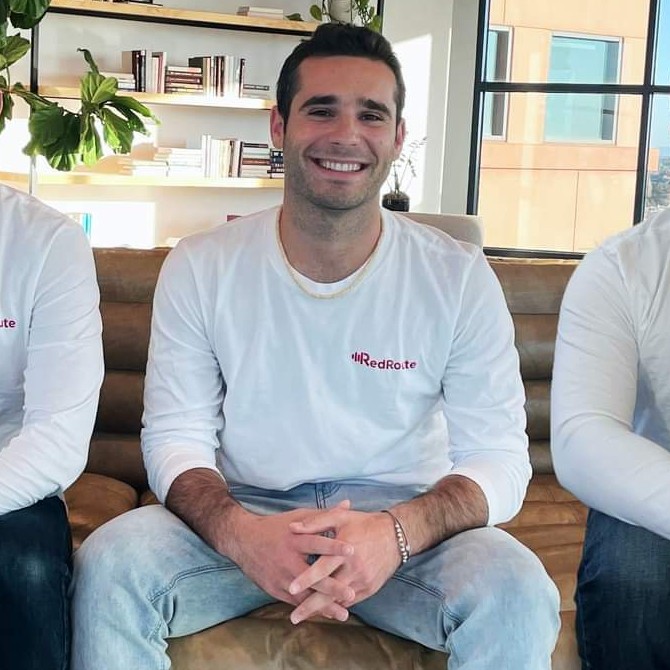
Brian Schiff
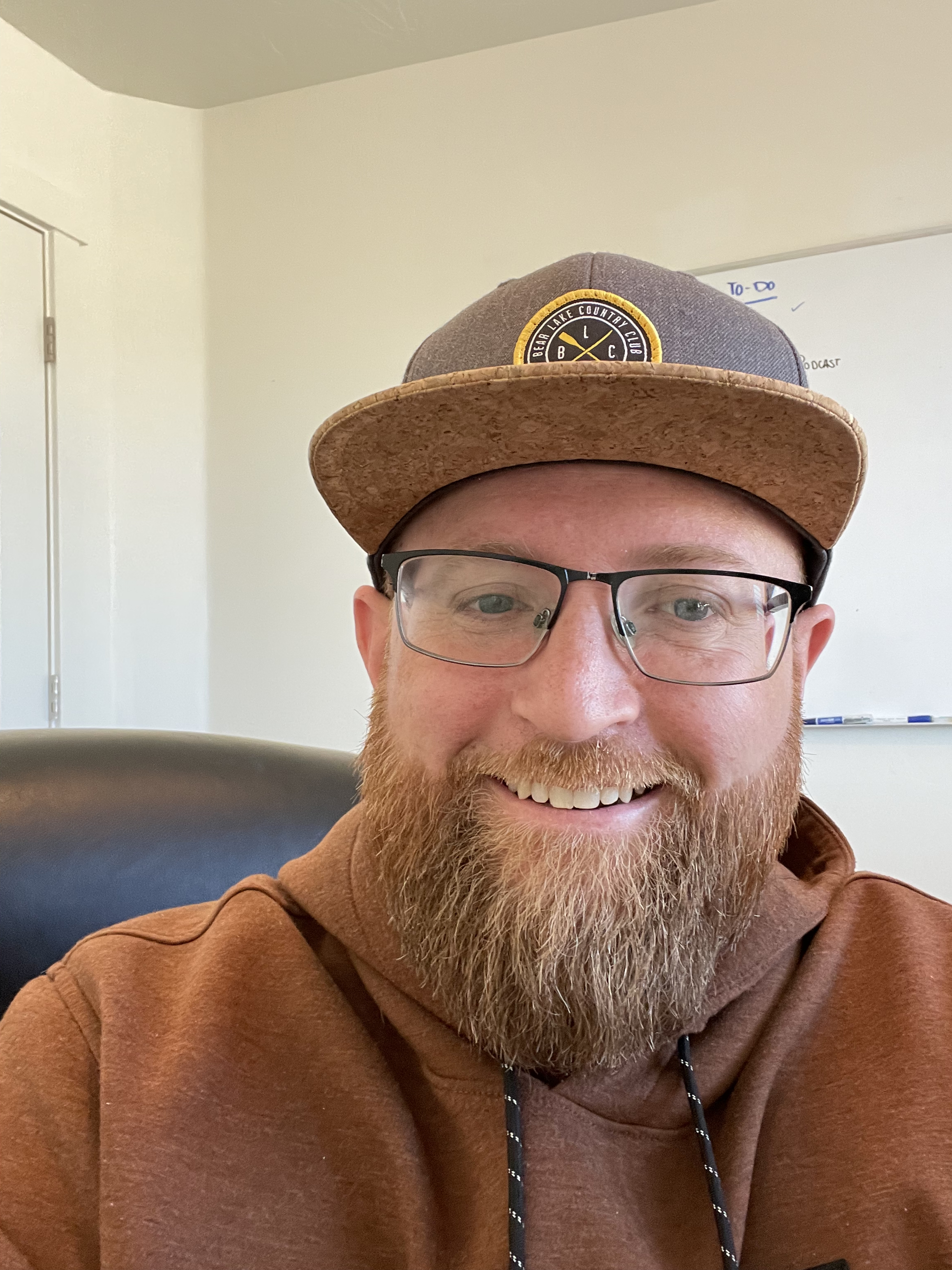
James Gilbert
Today's Guests



